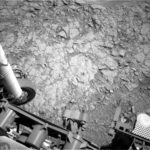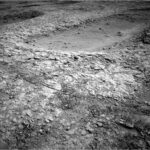Scientists revealed Wednesday that Mars’ innermost core appears to be a solid hunk of metal just like Earth’s.
phys.org24- Page
The magnetic fields that formed in the very early stages of the universe may have been billions of times weaker than a small fridge magnet, with strengths comparable to magnetism
In a breakthrough study published in Nature Astronomy, researchers have discovered a new origin for some of the fastest stars ever observed: hypervelocity white dwarfs—compact stellar remnants hurtling through space
Life is complicated, and not just in a philosophical sense. But one simple thing we know about life is that it requires energy, and to get that energy it needs
What was the universe like in the first few hundreds of millions of years after it came into existence? How did the first stars and galaxies form? Those are questions
For the first time, researchers have found that the number of electrical discharges on a spacecraft directly correlates to the number of electrons in the surrounding environment—information that could help
The recent discovery of the third known interstellar object (ISO), 3I/ATLAS, has brought about another round of debate on whether these objects could potentially be technological in origin. Everything from
A research team has used both archival Hubble Space Telescope data and new observations to precisely measure the binary star system NGC3603-A1. One star weighs about 93 times the mass
For this new Picture of the Month feature, the NASA/ESA/CSA James Webb Space Telescope has provided a fantastic new view of IRAS 04302+2247, a planet-forming disk located about 525 light-years
At first glance, Saturn’s moon Enceladus seems rather unremarkable: it is much smaller than the Earth’s moon and is far away and completely covered in ice.
-
 012024 in Review: Highlights from NASA in Silicon Valley
012024 in Review: Highlights from NASA in Silicon Valley -
 02Panasonic Leica Summilux DG 15mm f/1.7 ASPH review
02Panasonic Leica Summilux DG 15mm f/1.7 ASPH review -
 03How New NASA, India Earth Satellite NISAR Will See Earth
03How New NASA, India Earth Satellite NISAR Will See Earth -
 04And Thus Begins A New Year For Life On Earth
04And Thus Begins A New Year For Life On Earth -
 05Astronomy Activation Ambassadors: A New Era
05Astronomy Activation Ambassadors: A New Era -
06SpaceX launch surge helps set new global launch record in 2024
-
 07Space Force plans new ‘Futures Command’ amid pressure to speed up modernization
07Space Force plans new ‘Futures Command’ amid pressure to speed up modernization





